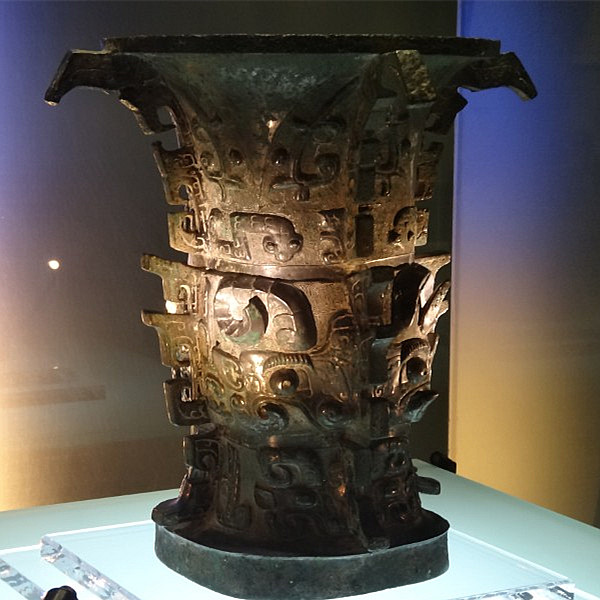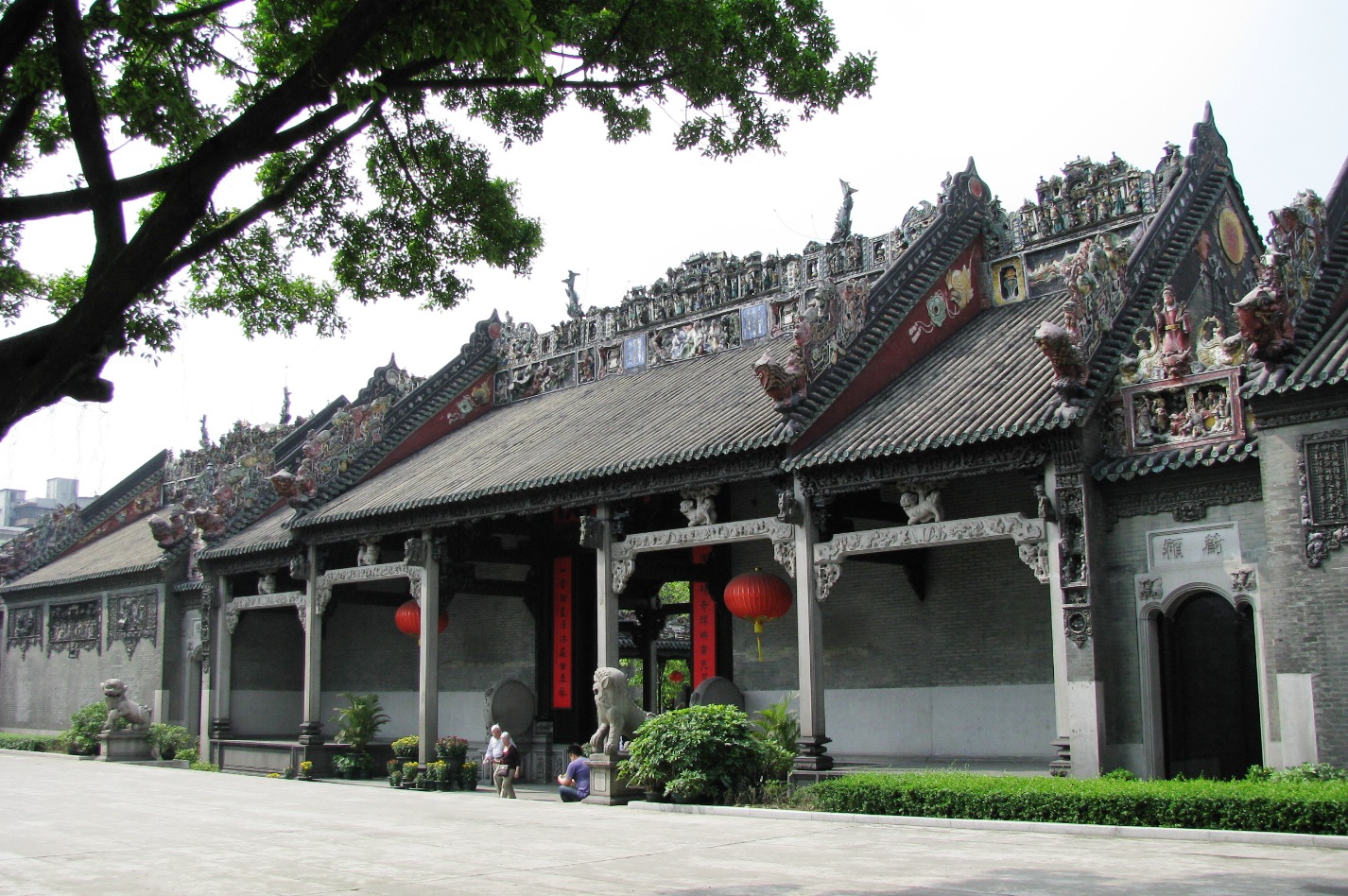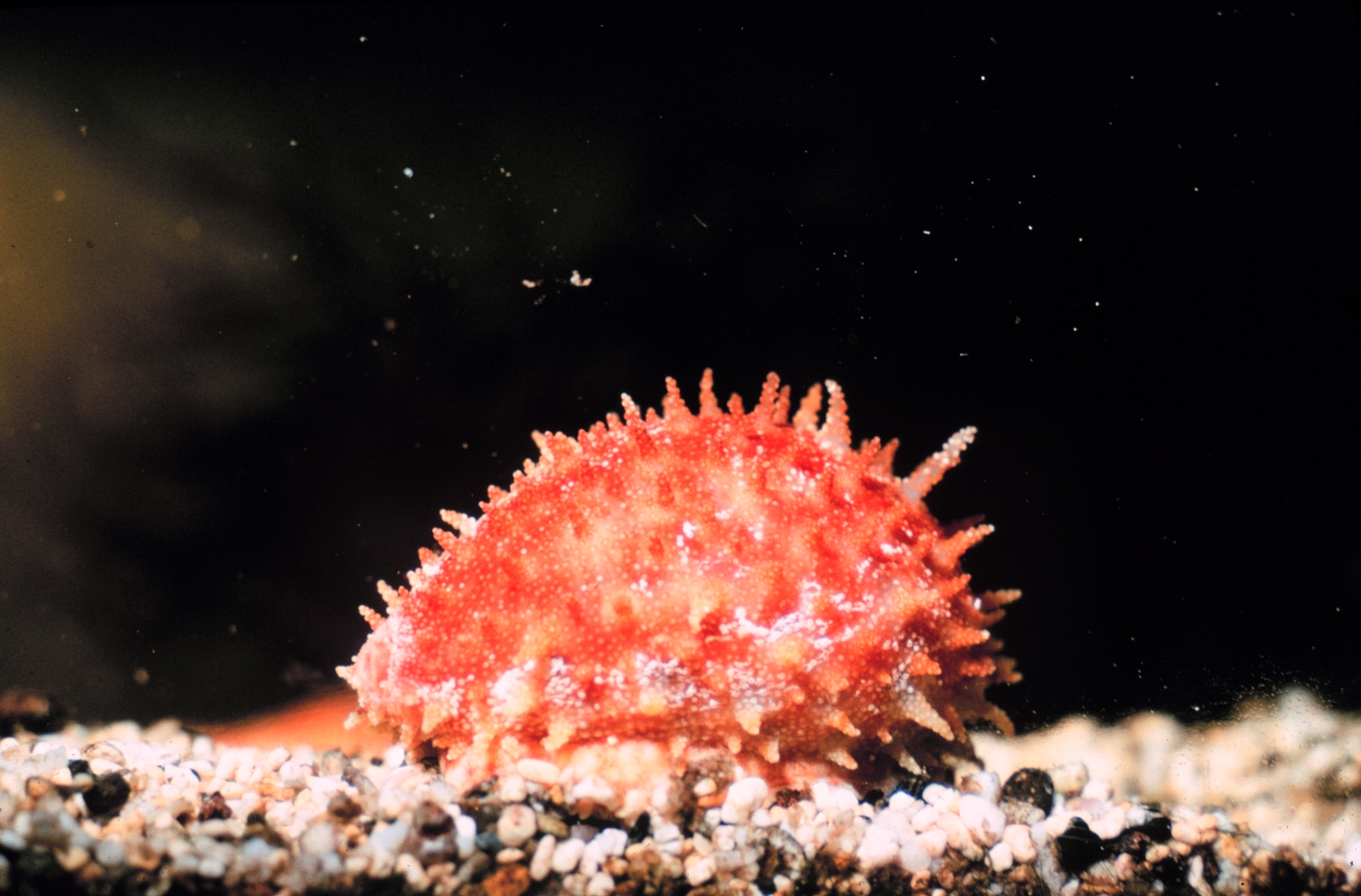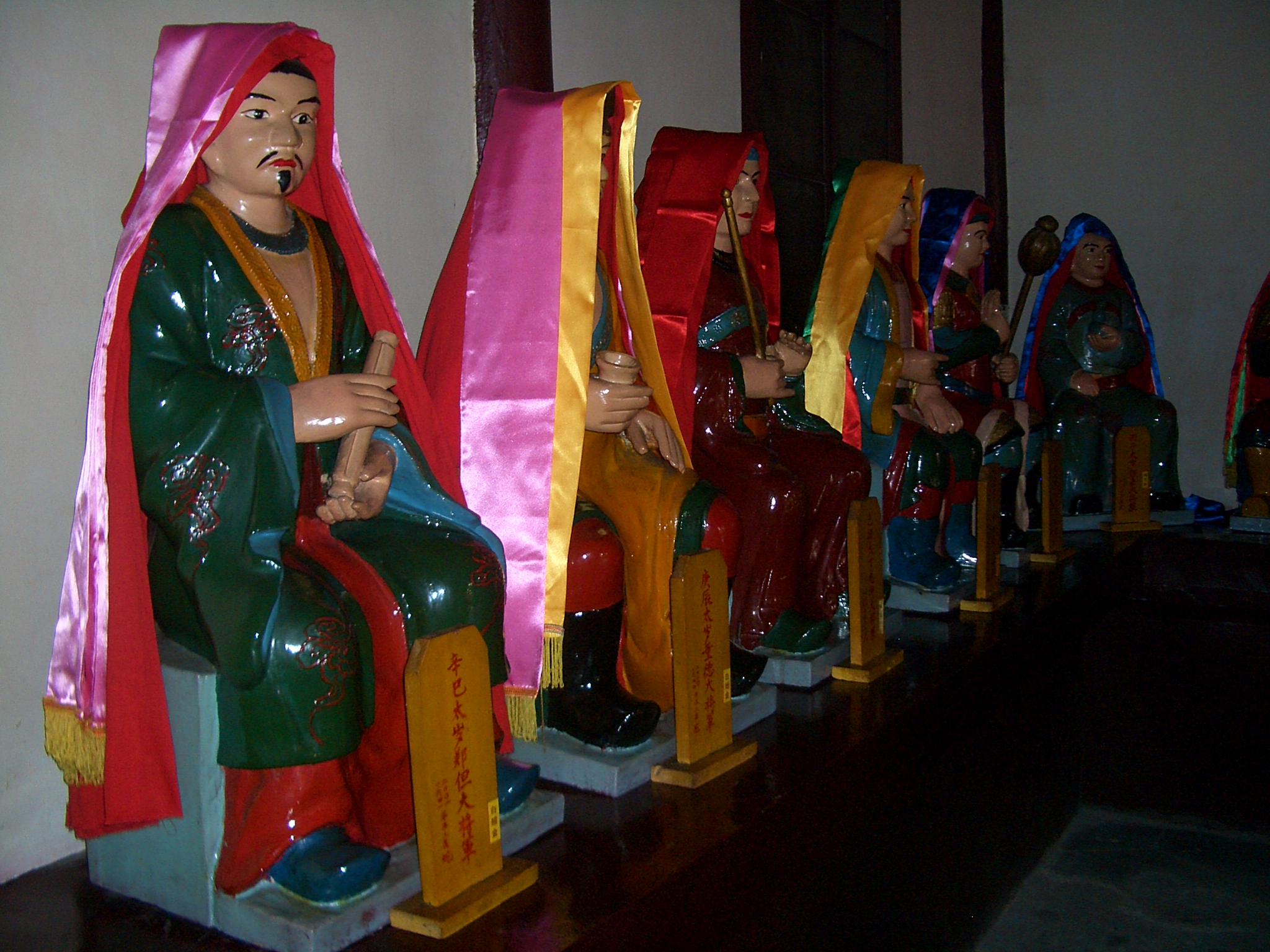|
He Zun
The He ''zun'' () is an ancient Chinese ritual bronze vessel of the ''zun'' shape.Xinhuanet.com.Xinhuanet.com." ''何尊.'' Retrieved on 2010-05-01. It dates from the era of Western Zhou (1046–771 BC), specifically the early years of the dynasty, and is famous as the oldest artifact with the written characters meaning "Middle Kingdom" — : "China" — in a bronze inscription on the container.big5.7qiji.com.China's 7 wonders (中國七大奇蹟)" ''何尊.'' Retrieved on 2010-05-01. Today it is in the Baoji Bronzeware Museum in Shaanxi. Dimension and significance The vessel, dating to the 5th year of the reign of King Cheng of Zhou, is 38.8cm tall, 28.8cm in diameter and weighs 14.6kg. Inside the container, at the base, it contains 12 rows of 122 inscribed Chinese characters. Of the 122 characters, 119 are identified while 3 are unknown. The inscription contains the phrase 宅𢆶𠁩或 () inscribed in early Zhou form, structurally different to the modern form of the cha ... [...More Info...] [...Related Items...] OR: [Wikipedia] [Google] [Baidu] |
He Zun
The He ''zun'' () is an ancient Chinese ritual bronze vessel of the ''zun'' shape.Xinhuanet.com.Xinhuanet.com." ''何尊.'' Retrieved on 2010-05-01. It dates from the era of Western Zhou (1046–771 BC), specifically the early years of the dynasty, and is famous as the oldest artifact with the written characters meaning "Middle Kingdom" — : "China" — in a bronze inscription on the container.big5.7qiji.com.China's 7 wonders (中國七大奇蹟)" ''何尊.'' Retrieved on 2010-05-01. Today it is in the Baoji Bronzeware Museum in Shaanxi. Dimension and significance The vessel, dating to the 5th year of the reign of King Cheng of Zhou, is 38.8cm tall, 28.8cm in diameter and weighs 14.6kg. Inside the container, at the base, it contains 12 rows of 122 inscribed Chinese characters. Of the 122 characters, 119 are identified while 3 are unknown. The inscription contains the phrase 宅𢆶𠁩或 () inscribed in early Zhou form, structurally different to the modern form of the cha ... [...More Info...] [...Related Items...] OR: [Wikipedia] [Google] [Baidu] |
Chengzhou
Luoyang is a city located in the confluence area of Luo River and Yellow River in the west of Henan province. Governed as a prefecture-level city, it borders the provincial capital of Zhengzhou to the east, Pingdingshan to the southeast, Nanyang to the south, Sanmenxia to the west, Jiyuan to the north, and Jiaozuo to the northeast. As of December 31, 2018, Luoyang had a population of 6,888,500 inhabitants with 2,751,400 people living in the built-up (or metro) area made of the city's five out of six urban districts (except the Jili District not continuously urbanized) and Yanshi District, now being conurbated. Situated on the central plain of China, Luoyang is among the oldest cities in China and one of the cradles of Chinese civilization. It is the earliest of the Four Great Ancient Capitals of China. Names The name "Luoyang" originates from the city's location on the north or sunny ( "yang") side of the Luo River. Since the river flows from west to east and the sun is to t ... [...More Info...] [...Related Items...] OR: [Wikipedia] [Google] [Baidu] |
State Administration Of Cultural Heritage
The National Administration of Cultural Heritage (NCHA; ) is an administrative agency subordinate to the Ministry of Culture and Tourism of the People's Republic of China. It is responsible for the development and management of museums as well as the protection of cultural relics of national importance. History After the Chinese Civil War, the State Bureau of Cultural Relics was established to protect relics and archaeological sites as well as help develop museums (though the agency languished during the political turmoil of the Cultural Revolution). Its cause was revitalized with the establishment of the State Cultural Relics Enterprises Management Bureau in 1973 to oversee the protection of cultural heritage and the State Bureau of Cultural Relics (SBCR) in 1988, under the jurisdiction of the Ministry of Culture, as the encompassing agency for conservation of Chinese culture and heritage. The agency is responsible for over 500,000 registered sites of immovable cultural relics ... [...More Info...] [...Related Items...] OR: [Wikipedia] [Google] [Baidu] |
Cultural Revolution
The Cultural Revolution, formally known as the Great Proletarian Cultural Revolution, was a sociopolitical movement in the People's Republic of China (PRC) launched by Mao Zedong in 1966, and lasting until his death in 1976. Its stated goal was to preserve Chinese communism by purging remnants of capitalist and traditional elements from Chinese society. The Revolution marked the effective commanding return of Mao –who was still the Chairman of the Chinese Communist Party (CCP)– to the centre of power, after a period of self-abstention and ceding to less radical leadership in the aftermath of the Mao-led Great Leap Forward debacle and the Great Chinese Famine (1959–1961). The Revolution failed to achieve its main goals. Launching the movement in May 1966 with the help of the Cultural Revolution Group, Mao charged that bourgeois elements had infiltrated the government and society with the aim of restoring capitalism. Mao called on young people to "bombard the headqu ... [...More Info...] [...Related Items...] OR: [Wikipedia] [Google] [Baidu] |
Zhou Dynasty
The Zhou dynasty ( ; Old Chinese ( B&S): *''tiw'') was a royal dynasty of China that followed the Shang dynasty. Having lasted 789 years, the Zhou dynasty was the longest dynastic regime in Chinese history. The military control of China by the royal house, surnamed Ji, lasted initially from 1046 until 771 BC for a period known as the Western Zhou, and the political sphere of influence it created continued well into the Eastern Zhou period for another 500 years. The establishment date of 1046 BC is supported by the Xia–Shang–Zhou Chronology Project and David Pankenier, but David Nivison and Edward L. Shaughnessy date the establishment to 1045 BC. During the Zhou dynasty, centralized power decreased throughout the Spring and Autumn period until the Warring States period in the last two centuries of the dynasty. In the latter period, the Zhou court had little control over its constituent states that were at war with each other until the Qin state consolidated power and forme ... [...More Info...] [...Related Items...] OR: [Wikipedia] [Google] [Baidu] |
Chinese Yuan
The renminbi (; symbol: ¥; ISO code: CNY; abbreviation: RMB) is the official currency of the People's Republic of China and one of the world's most traded currencies, ranking as the fifth most traded currency in the world as of April 2022. The yuan ( or ) is the basic unit of the renminbi, but the word is also used to refer to the Chinese currency generally, especially in international contexts. One yuan is divided into 10 jiao (), and the jiao is further subdivided into 10 fen (). The renminbi is issued by the People's Bank of China, the monetary authority of China. Valuation Until 2005, the value of the renminbi was pegged to the US dollar. As China pursued its transition from central planning to a market economy and increased its participation in foreign trade, the renminbi was devalued to increase the competitiveness of Chinese industry. It has previously been claimed that the renminbi's official exchange rate was undervalued by as much as 37.5% against its pur ... [...More Info...] [...Related Items...] OR: [Wikipedia] [Google] [Baidu] |
Taotie
The ''Taotie'' () is an ancient Chinese mythological creature that was commonly emblazoned on bronze and other artifacts during the 1st millennium BC. ''Taotie'' are one of the " four evil creatures of the world". In Chinese classical texts such as the "Classic of Mountains and Seas", the fiend is named alongside the ''Hundun'' (), ''Qiongqi'' () and ''Taowu'' (). They are opposed by the Four Holy Creatures, the Azure Dragon, Vermilion Bird, White Tiger and Black Tortoise. The four fiends are also juxtaposed with the four benevolent animals which are Qilin (), Dragon (), Turtle () and Fenghuang (). The ''Taotie'' is often represented as a motif on '' dings'', which are Chinese ritual bronze vessels from the Shang (1766-1046 BCE) and Zhou dynasties (1046–256 BCE). The design typically consists of a zoomorphic mask, described as being frontal, bilaterally symmetrical, with a pair of raised eyes and typically no lower jaw area. Some argue that the design can be traced back ... [...More Info...] [...Related Items...] OR: [Wikipedia] [Google] [Baidu] |
Chen (surname)
Chen () () is a common Chinese-language surname and one of the most common surnames in Asia. It is the most common surname in Taiwan (2010) and Singapore (2000). Chen is also the most common family name in Guangdong, Zhejiang, Fujian, Macau, and Hong Kong. It is the most common surname in Xiamen, the ancestral hometown of many overseas Hoklo. Chen was listed 10th in the ''Hundred Family Surnames'' poem, in the verse 馮陳褚衛 (Feng Chen Chu Wei). In Cantonese, it is usually romanized as Chan (as in Jackie Chan), most widely used by those from Hong Kong. Chan is also widely used in Macao and Malaysia. It is also sometimes spelled Chun. In many Southern Min dialects (including dialects of Hainan, Fujian, and Taiwan), the name is pronounced Tan, while in Teochew, it is pronounced Tang. In Hakka and Taishanese, the name is spelled Chin. In Wu it is pronounced Zen or Tchen. In Vietnam, this surname is written as Trần (in Quốc Ngữ) and is 2nd most common. In Thailand, t ... [...More Info...] [...Related Items...] OR: [Wikipedia] [Google] [Baidu] |
Cowry
Cowrie or cowry () is the common name for a group of small to large sea snails, ocean, marine Gastropoda, gastropod Mollusca, mollusks in the family Cypraeidae, the cowries. The term ''porcelain'' derives from the old Italian language, Italian term for the cowrie shell (''porcellana'') due to their similar appearance. Shells of certain species have historically been used as currency in several parts of the world, as well as being used, in the past and present, very extensively in jewelry, and for other decorative and ceremonial purposes. The cowrie was the shell most widely used worldwide as shell money. It is most abundant in the Indian Ocean, and was collected in the Maldive Islands, in Sri Lanka, along the Indian Malabar coast, in Borneo and on other East Indian islands, in Maluku Islands, Maluku in the Pacific, and in various parts of the African coast from Ras Hafun to Mozambique. Cowrie shell money was important in the trade networks of Africa, South Asia, and East Asia. ... [...More Info...] [...Related Items...] OR: [Wikipedia] [Google] [Baidu] |
China
China, officially the People's Republic of China (PRC), is a country in East Asia. It is the world's most populous country, with a population exceeding 1.4 billion, slightly ahead of India. China spans the equivalent of five time zones and borders fourteen countries by land, the most of any country in the world, tied with Russia. Covering an area of approximately , it is the world's third largest country by total land area. The country consists of 22 provinces, five autonomous regions, four municipalities, and two Special Administrative Regions (Hong Kong and Macau). The national capital is Beijing, and the most populous city and financial center is Shanghai. Modern Chinese trace their origins to a cradle of civilization in the fertile basin of the Yellow River in the North China Plain. The semi-legendary Xia dynasty in the 21st century BCE and the well-attested Shang and Zhou dynasties developed a bureaucratic political system to serve hereditary monarchies, or dyna ... [...More Info...] [...Related Items...] OR: [Wikipedia] [Google] [Baidu] |
Tian Gan Di Zhi
The sexagenary cycle, also known as the Stems-and-Branches or ganzhi ( zh, 干支, gānzhī), is a cycle of sixty terms, each corresponding to one year, thus a total of sixty years for one cycle, historically used for recording time in China and the rest of the East Asian cultural sphere. It appears as a means of recording days in the first Chinese written texts, the Shang oracle bones of the late second millennium BC. Its use to record years began around the middle of the 3rd century BC. The cycle and its variations have been an important part of the traditional calendrical systems in Chinese-influenced Asian states and territories, particularly those of Japan, Korea, and Vietnam, with the old Chinese system still in use in Taiwan, and to a lesser extent, in Mainland China. This traditional method of numbering days and years no longer has any significant role in modern Chinese time-keeping or the official calendar. However, the sexagenary cycle is used in the names of many histori ... [...More Info...] [...Related Items...] OR: [Wikipedia] [Google] [Baidu] |
He Zun Transcription
He or HE may refer to: Language * He (pronoun), an English pronoun * He (kana), the romanization of the Japanese kana へ * He (letter), the fifth letter of many Semitic alphabets * He (Cyrillic), a letter of the Cyrillic script called ''He'' in Ukrainian * Hebrew language (ISO 639-1 code: he) Places * He County, Anhui, China * He River, or Hejiang (贺江), a tributary of the Xi River in Guangxi and Guangdong * Hebei, abbreviated as ''HE'', a province of China (Guobiao abbreviation HE) * Hesse, abbreviated as ''HE'', a state of Germany People * He (surname), Chinese surname, sometimes transcribed Hé or Ho; includes a list of notable individuals so named * Zheng He (1371–1433), Chinese admiral * He (和) and He (合), collectively known as 和合二仙 ('' He-He er xian'', "Two immortals He"), two Taoist immortals known as the "Immortals of Harmony and Unity" * Immortal Woman He, or He Xiangu, one of the Eight Immortals of Taoism Arts, entertainment, and media * "He" (sh ... [...More Info...] [...Related Items...] OR: [Wikipedia] [Google] [Baidu] |



.jpg)





